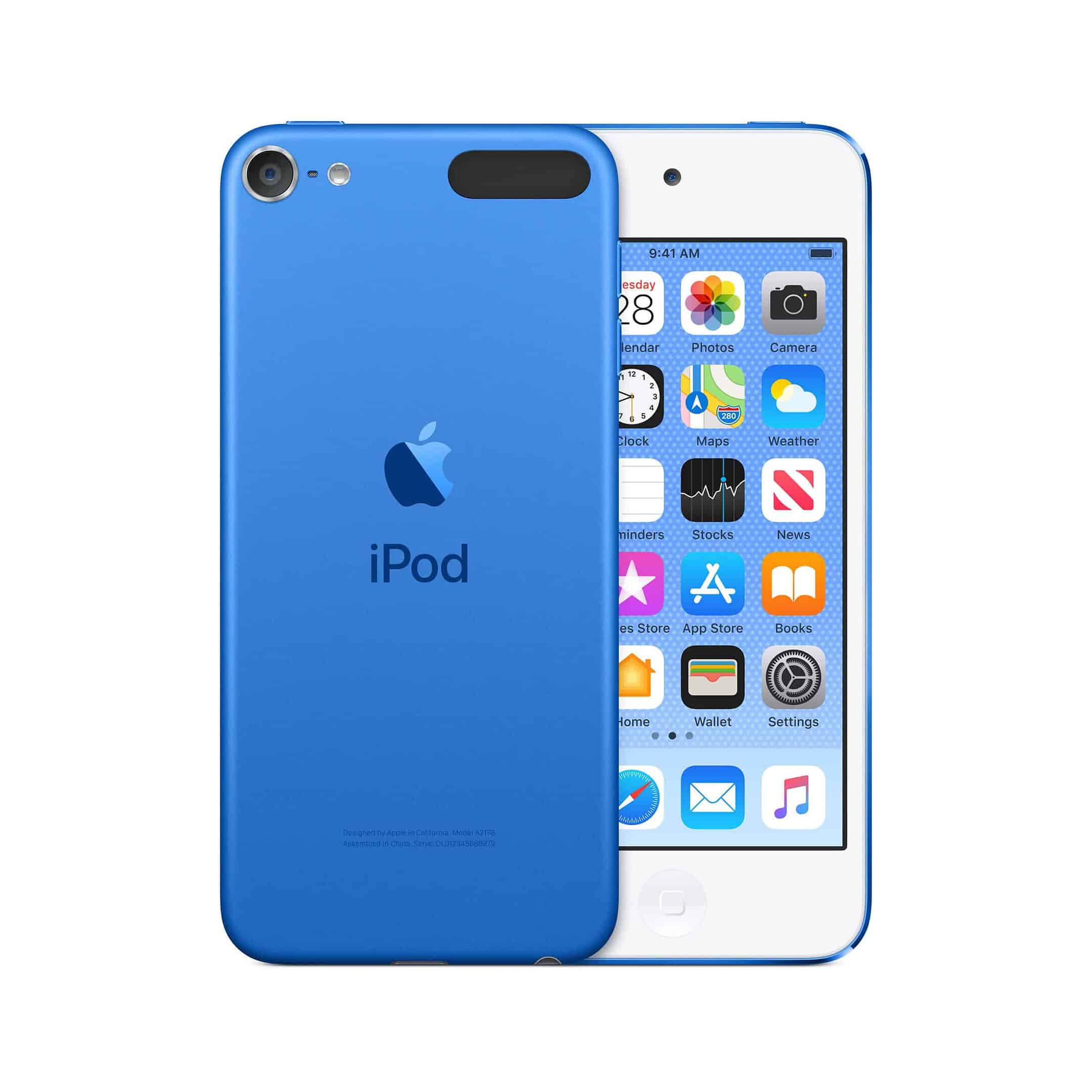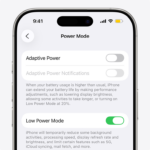The iPod changed how we listen to music forever. When Apple released the first iPod on October 23, 2001, it wasn’t just another MP3 player – it was a revolution in your pocket. The small white device with its iconic click wheel could hold an amazing 1,000 songs, something unheard of at the time when most portable music players could only store a handful of tracks.
Steve Jobs unveiled this groundbreaking gadget in a small room, not knowing it would transform both the music industry and Apple itself. The iPod arrived during a time when music piracy was rampant, and the industry had no clear path forward. What made it special wasn’t just its storage capacity but also its 10-hour battery life and simple interface that made digital music accessible to everyone.
Over the years, the iPod family grew to include many models like the Mini, Shuffle, Nano, and Touch. Each brought new features and designs while keeping the core promise of putting your entire music library in your pocket. The device helped Apple become the tech giant we know today and paved the way for the iPhone and other products that followed.

A Complete History of the iPod: Apple’s Iconic Music Revolution
The iPod wasn’t just a gadget — it was a cultural phenomenon. It changed how the world listened to music, paved the way for the iPhone, and helped Apple evolve into the tech juggernaut it is today. Here’s the full story of the iPod, from its launch in 2001 to its discontinuation in 2022.
📅 2001: The Birth of the iPod
October 23, 2001 – Apple unveiled the first-generation iPod, a pocket-sized device with a mechanical scroll wheel, FireWire connectivity, and a 5GB hard drive capable of storing around 1,000 songs.
- Slogan: “1,000 songs in your pocket”
- Price: $399
- Music Format: MP3 and AAC
- Design: White plastic front with a stainless-steel back
Though some critics questioned its high price and Mac-only support, the iPod’s elegant design and seamless integration with iTunes set it apart.
🌀 2002–2003: Refinement and Windows Support
- iPod 2nd Gen (2002): Introduced a touch-sensitive wheel and 10GB storage. Most importantly, it gained Windows support, massively expanding its potential audience.
- iPod 3rd Gen (2003): Introduced a slimmer design, dock connector, and touch-sensitive buttons above the wheel. It also marked the beginning of Apple’s famed white earbud identity.
This is when the iPod started becoming a mainstream hit.
📈 2004–2005: Explosion of the iPod Line
Apple began to diversify the iPod lineup:
- iPod mini (2004): Smaller, colorful aluminum casing with a click wheel. Aimed at younger users and available in 5 colors.
- iPod photo (2004): First model with a color screen and photo viewing.
- iPod shuffle (2005): A budget-friendly, screenless model the size of a pack of gum. It used flash memory and introduced a “shuffle-only” listening style.
- iPod nano (2005): Replaced the iPod mini. It was ultra-thin, used flash storage, and had a color screen. Became one of the most iconic iPod models ever.
- iPod 5th Gen (2005): Known as the “iPod video,” it introduced video playback with a larger 2.5-inch screen.
🎶 2006–2007: Peak iPod Popularity
By 2006, the iPod had taken over the portable music player market, with over 88% market share in the U.S..
- iTunes integration was better than ever.
- iPod accessories and third-party docks exploded.
- iPod became synonymous with music players.
Apple also released:
- iPod nano 2nd Gen: Aluminum body, more colors
- iPod shuffle 2nd Gen: Clipped-on design, even smaller
- iPod 5.5 Gen: Improved battery and screen brightness
📱 2007: The iPhone Arrives, But iPods Continue
While the iPhone was launched in 2007, the iPod lineup was still going strong.
- iPod classic (6th Gen): Rebranded from the standard iPod, now with up to 160GB of storage.
- iPod nano 3rd Gen: Wider screen, designed for video playback.
- iPod touch (1st Gen): Essentially an iPhone without the phone. Touchscreen, Wi-Fi, App Store support — the future of the iPod.
The iPod touch marked the shift from music player to media and app platform.
⚡ 2008–2012: The iPod Touch Era
As iPhones gained popularity, the iPod touch became the most relevant iPod.
- iPod touch (2nd–5th Gen): Became thinner, faster, and more capable — adding cameras, Retina display, and Siri.
- iPod nano (4th–7th Gen): Morphing designs — from tall and thin, to square with multitouch, then back to vertical with video support and Bluetooth.
- iPod shuffle (3rd & 4th Gen): Changed form factors, including the controversial model with no buttons.
- iPod classic (Discontinued 2014): Retired quietly after years without updates.
By the early 2010s, smartphones had begun to dominate music consumption. Streaming also grew, reducing the need to “own” music locally.
📉 2013–2022: Slow Fade to Black
The iPod’s role as a dedicated music player diminished:
- 2015: Apple Music launched, shifting the company’s focus to streaming.
- 2015: iPod nano and shuffle received minor color updates.
- 2017: Apple discontinued the iPod nano and iPod shuffle.
- 2019: Apple released the 7th-gen iPod touch, its final update. It had the A10 Fusion chip and ran iOS 12.
By then, the iPod was more of a niche device — used in education, by kids, or as cheap app platforms.
🛑 2022: The End of the iPod
May 10, 2022 – Apple officially discontinued the iPod touch, marking the end of the iPod era after over 20 years.
“The spirit of iPod lives on,” Apple said, noting that all of its current devices — iPhone, iPad, Apple Watch — continue to deliver seamless music experiences.
📊 Total Impact of the iPod
- Units sold: Over 450 million iPods sold worldwide.
- Cultural impact: Changed how we think about music, introduced iconic ad campaigns, and helped drive the iTunes Store, revolutionizing digital media sales.
- Business impact: iPod sales helped Apple recover from near bankruptcy in the 1990s and set the stage for the iPhone’s dominance.
🎧 Legacy
Though discontinued, the iPod remains one of the most important consumer electronics in history. It democratized music access, introduced minimalist design language to mainstream gadgets, and laid the groundwork for modern mobile computing.
The iPod isn’t just a piece of tech nostalgia — it’s a symbol of the digital music revolution and the device that helped reinvent Apple.
Key Takeaways
- The first iPod launched in 2001 could hold 1,000 songs with a 10-hour battery, solving the portable music problem when digital music markets didn’t exist.
- Apple’s iPod evolved through many models including the Mini, Shuffle, Nano, and Touch, each with unique features and designs.
- The iPod sold approximately 450 million units before being discontinued in 2022, cementing its place as a cultural icon that changed how we consume music.
Origins and Development
The iPod revolutionized portable music when it launched in 2001. Apple’s creation process involved careful planning, innovative engineering, and smart marketing that would change how people listened to music forever.
Conceptualization and Design
Steve Jobs recognized a gap in the digital music market in early 2001. He tasked a small team led by Jon Rubinstein to create a device that would make portable music simple and elegant. The team developed the first iPod in less than one year, working under the secret codename “Dulcimer.”
The design team focused on three main principles:
- Easy navigation through thousands of songs
- Pocket-sized portability
- Long battery life
Jobs insisted on the now-famous scroll wheel interface, allowing users to quickly browse through music collections. The clean white design with minimal buttons became an instant icon in tech history.
The original prototype went through several iterations before the final version was approved. Apple’s designers wanted to make sure it felt premium in the hand while remaining simple enough for anyone to use.
Technical Specifications
The first iPod packed impressive hardware for 2001. It featured a 5GB hard drive that could hold 1,000 songs – an amazing feat when most MP3 players held only a dozen tracks.
Key technical features included:
- ARM7TDMI processor running at dual 90 MHz
- 32MB of RAM
- 10-hour battery life
- 2-inch monochrome display
- FireWire connection for fast transfers
The embedded FPU (Floating Point Unit) helped process audio files efficiently. The 32-bit register width and data bus made the iPod significantly faster than competitors, allowing for smooth scrolling and quick response times.
Battery life was a major focus. The team created power management systems that let users listen all day without recharging – something unheard of with portable CD players.
Naming and Branding
The name “iPod” came from a freelance copywriter who was inspired by the movie 2001: A Space Odyssey. The “pod” referenced both the spaceship in the film and the idea of a contained music system.
Apple wanted a name that:
- Sounded modern and unique
- Was easy to remember
- Fit with their existing “i” product lineup (iMac)
The marketing team crafted the famous slogan “1,000 songs in your pocket,” which perfectly summarized the iPod’s main benefit. This simple phrase helped consumers immediately understand why the iPod was different from everything else.
The distinctive white earbuds became part of the branding strategy. They stood out from the typical black headphones of the era, making iPod users instantly recognizable in public.
Hardware and Models
Apple’s iPod line evolved dramatically over its 20-year history, featuring various control mechanisms, storage options, and design changes that revolutionized portable music players.
First Generation iPod
The original iPod launched on October 23, 2001, with a groundbreaking design for its time. It featured a 5 GB hard drive that could hold “1,000 songs in your pocket” as Steve Jobs famously announced. This first model introduced the iconic white earbuds and featured a mechanical scroll wheel that physically rotated to navigate menus.
The device connected to computers via FireWire, which was much faster than USB at the time. This allowed for quicker music transfers when syncing with iTunes.
The original iPod measured 4 inches tall and weighed 6.5 ounces. Despite its relatively high price of $399, the combination of elegant design and substantial storage made it an instant hit among music lovers.
Subsequent iPod Generations
As the iPod gained popularity, Apple expanded the product line with various models. The iPod Classic series evolved from the original, eventually incorporating the famous Click Wheel that replaced the mechanical scroll wheel.
The iPod Mini debuted in 2004, featuring a smaller form factor and colorful aluminum cases. This was followed by the even smaller iPod Nano, which eventually went through seven generations with various designs.
The iPod Shuffle removed the screen entirely, creating an ultra-portable option. Meanwhile, the iPod Touch, introduced in 2007, shared much of its technology with the iPhone, featuring a multi-touch display and iOS.
The control methods evolved significantly – from the original mechanical scroll wheel to the solid-state touch wheel, and finally to the click wheel that became synonymous with iPod design.
Storage Evolution
The iPod’s storage capacity grew substantially throughout its lifetime. Starting with the original 5 GB model, Apple quickly released 10 GB and 20 GB versions to meet demand for larger music libraries.
Storage technology evolved in two main directions:
- Hard Disk Drives: Used in full-sized iPods, eventually reaching 160 GB in later iPod Classic models
- Flash Memory: Employed in smaller iPods like the Nano and Shuffle
This table shows the key storage milestones:
| Year | Model | Storage Type | Max Capacity |
|---|---|---|---|
| 2001 | Original iPod | Hard Drive | 5 GB |
| 2004 | iPod Photo | Hard Drive | 60 GB |
| 2007 | iPod Classic | Hard Drive | 160 GB |
| 2005 | iPod Nano | Flash Memory | 4 GB |
| 2012 | iPod Touch (5th gen) | Flash Memory | 64 GB |
The switch to solid-state storage in smaller iPods enabled thinner designs and better battery life, while hard drives remained in larger models to maximize capacity for serious music collectors.
Software and Interface
The iPod’s success wasn’t just about its hardware design, but also its intuitive software interface that made music management simple. Apple’s approach to iPod software evolved significantly over the years, creating a seamless experience between device and computer.
Operating System and Updates
The iPod ran on a custom operating system built on Pixo OS, a toolkit developed by PIXO, Inc. This foundation allowed Apple to create the iconic iPod interface with its simple menu system and click wheel navigation.
Early iPods shipped with basic software that handled music playback and simple settings. The interface used a text-based menu system that was easy to navigate with the scroll wheel.
As the iPod evolved, Apple regularly released software updates that added new features. These updates improved performance and added capabilities like games, calendars, and notes.
The software interface remained remarkably consistent across generations, with the classic menu structure: Music, Photos, Videos, Podcasts, Extras, Settings, and Shuffle Songs.
Synchronization Features
When first released in 2001, iPods used iTunes for Mac users, while Windows users relied on Musicmatch Jukebox for synchronization. In 2003, Apple brought iTunes to Windows, unifying the experience across platforms.
Early iPods connected via FireWire, offering faster transfer speeds than competitors. Later models added USB support, making iPods more accessible to all computer users.
iTunes revolutionized how people managed music libraries. It automatically synced music, playlists, and later podcasts and videos to the iPod. Users could choose between full library syncing or manual management.
The iTunes Music Store, launched in 2003, integrated directly with the software, making it easy to purchase and download music directly to iPods. This created a complete ecosystem for digital music.
Cultural Impact and Legacy
The iPod changed how people listened to music and shaped modern culture. It turned Apple into a tech giant and made digital music the new normal for millions of people.
Changing the Music Industry
The iPod revolutionized the music industry when it launched in 2001. Before iPod, the industry struggled with piracy and had no working digital business model.
Steve Jobs saw an opportunity to create a legal music marketplace. The iTunes Music Store, launched in 2003, gave people a way to buy single songs for 99 cents. This simple idea changed how music was sold forever.
Record labels initially feared digital music. They later embraced the iPod ecosystem when they saw its potential for new sales.
Music downloads quickly replaced CDs as the main way people bought music. By 2010, digital music sales had grown into a multi-billion dollar business that saved the industry during a difficult time.
Marketing and Iconography
The iPod’s white earbuds became an instantly recognizable symbol of the digital music era. Apple’s colorful silhouette ads showed dancers with white cords against bright backgrounds, creating some of the most effective marketing of the 2000s.
Apple sold the iPod as more than a device – it was a lifestyle. The “1,000 songs in your pocket” slogan made a clear promise that anyone could understand.
Special editions like the iPod U2 Special Edition connected the device to popular culture. Celebrity endorsements made the iPod cool to own.
The annual product reveals in San Francisco became major media events. Jobs would pull the latest iPod from his pocket to gasps from the audience.
Sales reached over 400 million units during the iPod’s lifetime, making it one of the most successful consumer products ever created.
Technical Details
The iPod revolutionized portable music with its impressive technical capabilities. These features combined to create a device that was both powerful and user-friendly, setting new standards in the portable media player market.
Audio Capabilities
The original iPod offered groundbreaking audio quality for its time. It supported multiple audio formats including MP3, AAC, WAV, and AIFF. The device featured a built-in digital-to-analog converter that delivered crisp, clean sound to listeners.
Early iPods included 20-hour skip protection, a significant improvement over CD players of that era. This meant users could jog or move around without music interruption.
The audio output delivered through the 3.5mm headphone jack provided high-quality stereo sound. Later models improved this with:
- Enhanced frequency response
- Better signal-to-noise ratio
- Customizable EQ settings
Though early iPods lacked built-in speakers, they could connect to external audio systems. This made the device versatile for both personal and shared listening experiences.
Physical Characteristics
The original iPod measured 4.02 × 2.43 × 0.78 inches and weighed 6.5 ounces. This compact design made it pocket-friendly yet substantial enough to hold in hand comfortably.
A key physical feature was the backlit LCD screen. The first generation offered a 160 × 128 pixel resolution with a 2-inch display that showed track information and menu options in a clear, readable format.
The iconic click wheel, introduced in later versions, became the iPod’s most recognizable physical attribute. This intuitive control mechanism allowed users to:
- Scroll through thousands of songs
- Adjust volume
- Navigate menus with one thumb
The device’s white front and stainless steel back became instantly recognizable design elements that influenced tech aesthetics for years.
Connectivity and Power
Early iPods connected to computers via FireWire (IEEE 1394), which was revolutionary for its time. The original 2001 model could transfer data at up to 400 Mbps, allowing users to load 1,000 songs in minutes.
Later generations transitioned to USB 2.0, making iPods more compatible with Windows computers. This shift helped expand the iPod’s market reach significantly.
The internal hard drive used ATA-5 technology:
| Generation | Storage Capacity |
|---|---|
| 1st Gen | 5GB, 10GB |
| 3rd Gen | Up to 40GB |
| 4th Gen | Up to 60GB |
Battery life was initially rated at 10 hours of continuous playback. Power management improved with each generation, eventually providing up to 24 hours of audio playback in later models.
Product Evolution
The iPod transformed from a simple music player into a versatile device with numerous features and models over its lifespan. Apple consistently improved storage capacity, interface design, and functionality to meet changing consumer needs.
Introduction of New Features
The original iPod launched in 2001 with a mechanical scroll wheel and 5GB storage. This revolutionary device could hold 1,000 songs in your pocket.
Apple quickly expanded the iPod family with new models. The iPod Mini arrived in 2004, featuring a smaller design and the innovative Click Wheel interface that replaced the earlier mechanical wheel.
Color screens became standard with the iPod Photo in 2004. This upgrade allowed users to view album artwork and photos alongside their music collections.
The tiny iPod Shuffle debuted without a screen, emphasizing simplicity. Meanwhile, the iPod Nano replaced the Mini in 2005, offering a sleek design with a color screen in an incredibly thin package.
Video playback capabilities arrived in 2005, transforming the iPod from a music player into a multimedia device. Storage capacity grew dramatically over time – from 5GB to eventually 160GB on some models.
Transition to iPod Touch
The iPod Touch marked a revolutionary shift when it launched in 2007. It essentially functioned as an iPhone without cellular capabilities.
With its multi-touch interface, the iPod Touch abandoned the Click Wheel entirely. The device featured a large touchscreen that allowed for intuitive navigation through music, videos, and apps.
The App Store integration transformed the iPod Touch into a versatile mobile computing platform. Users could download games, productivity tools, and social media apps.
Later generations of the iPod Touch added cameras, faster processors, and improved displays. These features made it popular not just for music but for gaming, communication, and web browsing.
The final iPod Touch model was released in 2019, featuring the A10 Fusion chip. Apple officially discontinued the entire iPod line in May 2022, ending a 21-year product journey.
Discontinuation and Aftermath
After a remarkable 20-year run, Apple discontinued the iPod on May 10, 2022. This marked the end of a product line that had transformed how people listened to music.
The iPod became Apple’s longest-running product line to be canceled. Many fans felt sad when the news broke, but sales had been dropping for years as smartphones took over.
The iPod Classic was the first to go. Apple stopped making it in 2014, ending the line that began with the original white device with a click wheel. The Classic had reached its fifth generation before Apple moved on to newer models.
Apple’s decision came as no surprise to market watchers. The iPhone had all the same features as an iPod, plus many more. Why carry two devices when one could do it all?
When the final iPod Touch was terminated, Apple noted that its music experience now lived on through other products:
- iPhone
- Apple Watch
- HomePod mini
- Mac computers
- iPad
The company sold the remaining iPod Touch units until supplies ran out. Some became collector’s items, with prices rising on second-hand markets.
Music streaming services like Apple Music and Spotify had replaced the need to own music files. The iPod’s main purpose – carrying thousands of songs in your pocket – was no longer special.
Though gone from store shelves, the iPod’s influence remains huge. It helped build Apple into the tech giant it is today and changed music forever.
Frequently Asked Questions
The iPod changed music listening habits and led to major shifts in the music industry. Apple’s iconic device saw many changes in design, features, and technology from 2001 until its final models.
What were the significant milestones in the development of the iPod?
The iPod journey began when Apple released the first version on November 10, 2001. This came shortly after the Macintosh version of iTunes was launched.
The first iPod featured a mechanical scroll wheel and had impressive storage capacity for its time. Apple later made iPods compatible with Windows computers, which included MusicMatch software instead of iTunes.
The introduction of the click wheel in later models made the iPod easier to use. Touch screen technology in the iPod Touch represented another big step forward.
How has the iPod evolved since its introduction?
The original iPod, known by its code name “Dulcimer”, started with a simple design but evolved quickly.
Early models had black and white screens, but later versions added color displays. Storage grew from the original 5GB to 160GB in the final Classic models.
Size and weight dropped dramatically with the Nano and Shuffle lines. The iPod Touch added internet connectivity, apps, and many smartphone-like features without cellular service.
What impact did the iPod have on the music industry?
The iPod changed how people bought and listened to music. It helped shift the industry from album sales to individual song purchases through the iTunes Store.
Music piracy decreased as iTunes offered an easy, affordable way to buy music legally. Artists and record labels had to adapt to digital distribution.
The device made it possible to carry thousands of songs in your pocket. This portability changed when and where people listened to music.
Which models were included in the iPod lineup throughout its history?
The iPod Classic was the original line and went through several generations. It kept the click wheel and hard drive storage throughout its run.
The iPod Mini introduced colored aluminum cases and was later replaced by the smaller iPod Nano. The Nano went through many design changes over its lifetime.
The iPod Shuffle eliminated the screen entirely, focusing on small size and simplicity. The iPod Touch was essentially an iPhone without the phone.
When did Apple discontinue the iPod Classic, and why?
Apple discontinued the iPod Classic in September 2014. The company stopped production because parts were becoming hard to find.
Consumer interest had shifted to devices with more features like the iPod Touch and iPhone. Storage needs were changing as streaming became more popular than owning music.
The large hard drive that made the Classic special was no longer needed as cloud storage grew. Apple had sold an estimated 450 million iPods by the time the Classic was discontinued.
How has the iPod’s role changed with the introduction of smartphones?
When the iPhone launched in 2007, it included all iPod features plus phone capabilities. This began the slow decline of dedicated music players.
The iPod Touch remained popular for those who wanted apps without cell service. Parents often bought them for children who weren’t ready for phones.
Most consumers now use their smartphones as music players. Streaming services like Apple Music and Spotify have reduced the need for large music libraries on devices.







